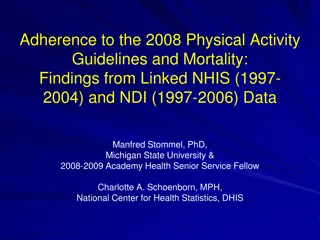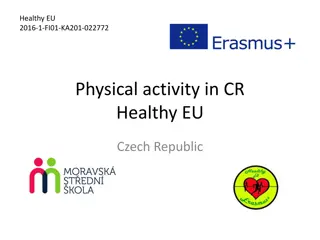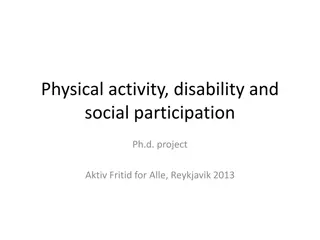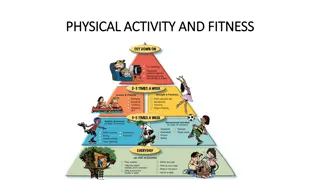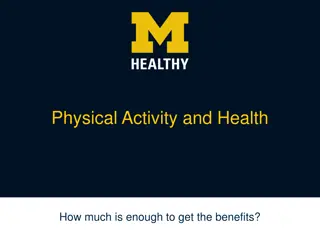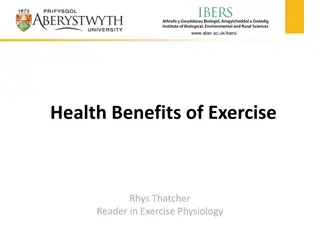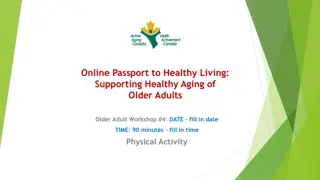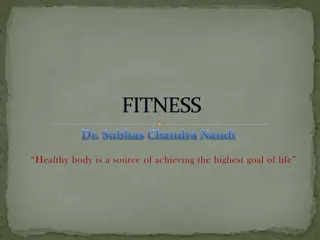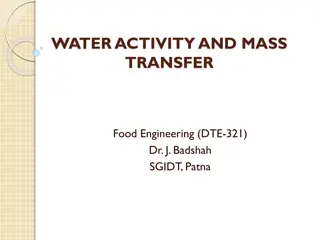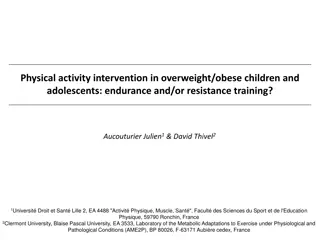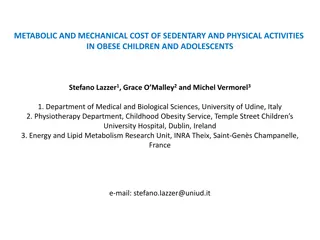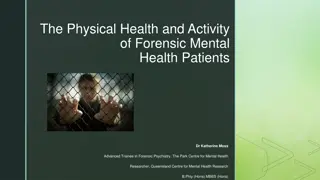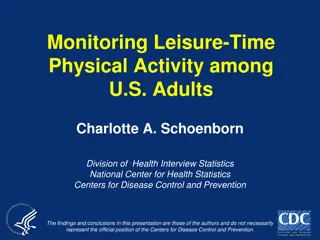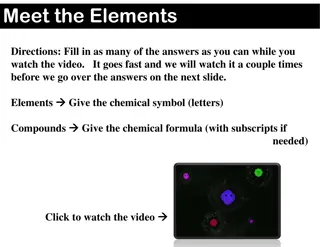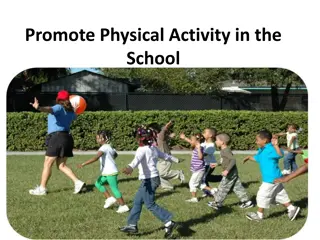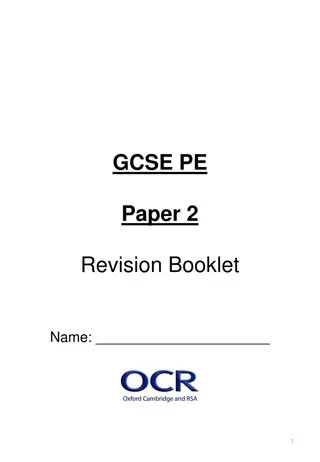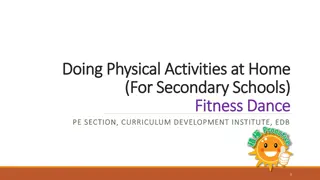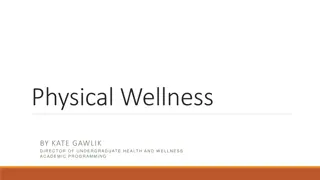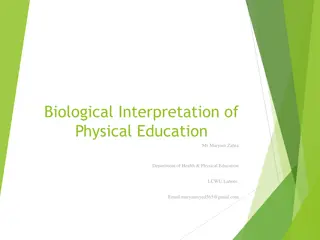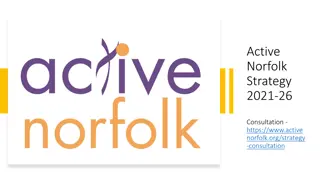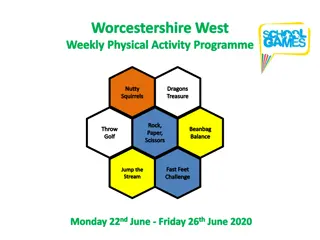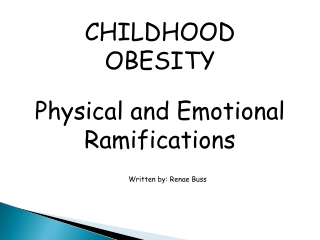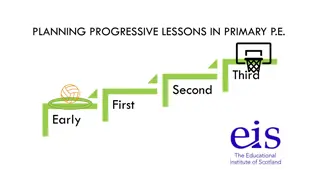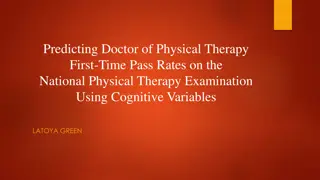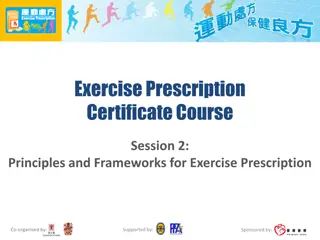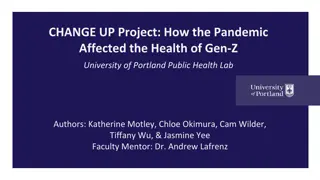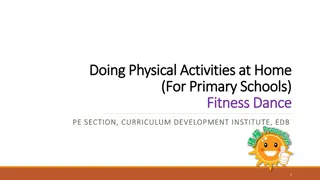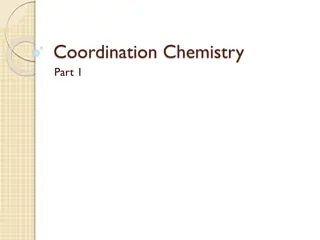Benefits and Elements of Physical Activity Study Guide
Explore the benefits of physical activity for physical, mental, and social health, as well as the negative effects of a sedentary lifestyle. Learn about the elements of fitness including cardiorespiratory endurance, muscular strength, muscle endurance, flexibility, and body composition. Discover how aerobic and anaerobic exercises can improve different aspects of fitness, and understand factors influencing your choice of physical activities.
Download Presentation

Please find below an Image/Link to download the presentation.
The content on the website is provided AS IS for your information and personal use only. It may not be sold, licensed, or shared on other websites without obtaining consent from the author. Download presentation by click this link. If you encounter any issues during the download, it is possible that the publisher has removed the file from their server.
E N D
Presentation Transcript
Chapter 4 Study Guide
1. List 3 benefits of physical activity for physical health. Improved cardiovascular health. Improved respiratory function. Improved reaction time.
2. List 3 benefits of physical activity for mental health. Reduced stress. Help manage anger or frustration. Improved mood/decrease depression.
3. List 3 benefits of physical activity for social health. Meet new people. Builds self confidence. Interact and cooperate with others.
4. Identify 4 possible negative effects of a physically inactive lifestyle. Unhealthy weight gain. Increased risk of cardiovascular disease, type 2 diabetes, and cancer. Reduced ability to manage stress. Decreased opportunities for friendships.
5. Describe each element of fitness. Cardiorespiratory endurance ability of the heart, lungs, and blood vessels to utilize and send fuel and oxygen to the body s tissues during long periods of moderate to vigorous activity. Muscular strength the amount of force a muscle can exert. Muscle endurance the ability of the muscles to perform physical tasks over a period of time without becoming fatigued.
5. continued Flexibility the ability to move a body part through a full range of motion. Body composition the ratio of body fat to lean body tissue.
6. What category of exercise can improve cardiorespiratory endurance? Aerobic exercise.
7. What category of exercise can improve muscular strength and endurance? Anaerobic exercise.
8. Identify 3 factors that influence your choice of physical activities. Cost. Where you live. Your level of health.
9. Define the three principles of an effective fitness program. Overload working the body harder than it is normally worked. Progression gradual increase in overload necessary to achieve higher levels of fitness. Specificity particular exercises and activities to improve particular areas of fitness.
10. Explain each term in the F.I.T.T. formula. Frequency how often you do the activity each week. Intensity how hard you work at the activity per session. Time how much time you devote to each session. Type which activities you select.
11. Define training program. A program of formalized physical preparation for involvement in a sport or another physical activity.
12. What is a health screening? Explain the importance of having a health screening before beginning a new activity. Health screening search or check for diseases or disorders that an individual would otherwise not have knowledge of or seek help for. To ensure that you don t have a health condition that could make activity dangerous for you.
13. Identify the amount of water that should be consumed before and during a workout. 16 to 24 ounces 2 to 3 hours before a workout. 6 to 12 ounces every 15 to 20 minutes during the workout.
14. Identify two hot weather health risks. Muscle cramps. Heat exhaustion. Heat stroke.
15. Identify two cold weather health risks. Hypothermia. Frostbite.
16. What are 3 minor injuries that might occur during physical activity. Muscle cramp. Strain. Sprain.
17. What do each of the letters in the R.I.C.E. procedure stand for? Rest. Ice. Compression. Elevation.



